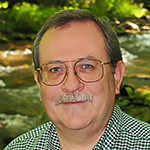Sharpening adds a small halo to edges, emphasizing contrast changes to make the image appear sharper.
If you sharpen before noise reduction, any noise existing in the image may well receive the edge halo, thereby emphasizing the noise and requiring a heavier noise reduction setting to blur it out.
If, instead, you sharpen after noise reduction, the noise is blurred first, leaving less distinct edges; therefore, the upcoming sharpening routine should not add a halo to the noise, making it less obvious.
Then when the sharpening routine does its job, it will add the halo only to normal high-contrast changes (edges) in the image, sharpening only the things that really should be sharpened (not the noise).
Therefore, I would do noise reduction and then sharpening. Most of the sharpening software automatically reduces the noise and then resharpens the image. Apps like Photoshop allow you to control the amount of noise reduction and the amount of after-sharpening.
Keep on capturing time…
Darrell Young
Darrell Young is an active member of the Nikonians User Community, Nikon Professional Services (NPS), Professional Photographers of America (PPA), North American Nature Photography Association (NANPA), and the author of 24 photography books from NikoniansPress and Picture and Pen Press, through Rocky Nook. You may review a few of Darrell’s Nikon books here. He has been an avid photographer since 1968 when his mother gave him a Brownie Hawkeye camera.
This website was created to support the readers of his educational books, photography students, and clients. Visitors to this website will find articles and reviews designed to inform, teach, and help you enjoy your photographic journey.

Hello Darrell,
I think you and I are about the same age. I have been taking photos, since 1967 and bought my first professional Nikon digital camera, in 2008, with the Nikon D3.
I cannot agree, entirely with your explanation of sharpening. Or, Noise versus Sharpening. There is no one magic bullet. If all images were created under exactly the same ambient conditions, same Shutter Speed, ISO, and Aperture, you might be able to treat them the same.
What I will do is magnify the image from its base 16 or 25% on screen to 100%, looking at edges, such as a roof line or tree branch with blue sky or cloud in the background, checking fior halo. I will take that image up to 400%, doing the same. For me, I try to minimise the halo, certainly to no more than 1 or maybe 2 pixels, at most.
I find that Nosie Reduction versus Sharpening is a delicate balance, getting rid of the Noise, retaining adjacent contrast and sufficient sharpness to look natural, as I would see it. Sometimes, I do not sharpen, at all. Sometimes to minimise the halo and gradient I will add bit more Noise Reduction or even Gaussian Blur.
Whether I do one before the other depends upon the image and the ISO. Strangely, even 100 ISO sometimes show a bit of Noise . . . But, the more Noise Reduction a Photographer uses, the more surreal and Hollywood CGI the images look, skin on a Model looking more like Barbie plastic.
I find most photographers tend to over-sharpen their images, with noticable halos at 100%. Maybe viewed 100 feet away, that might be OK.
There are a couple other techniques Photographers should consider . . . Remove Color Noise. Start with 25% and go up from there. Also, I have found if I make a monochrome image from a properly saturated color image, then overlay the monochrome onto the color image, then reduce Opacity to 66% (in Photoshop) then Merge Layers, then re-Saturate the Colors to 51% to 73%, at most, this technique brings out detail and sharpens an image without ever actually doing any specific sharpening.
I am not sure why. For example, it will bring out the veins in flowers and leaves, not seen in just a color image.
Here is an image I did, using the above technique . . . I did not sharpen it, at all, during processing or post.
So, in summary, Noise reduction vs. Sharpening is very much trial and error. There is no magic bullet. In fact, the same photo processed in one software will look differently in another, some will even strip portions of EXIF or will not correctly identify Color Temperature set, in camera. Lightroom is notorious for this.
By the way, I use a Nikon D3 and Nikon D3x.